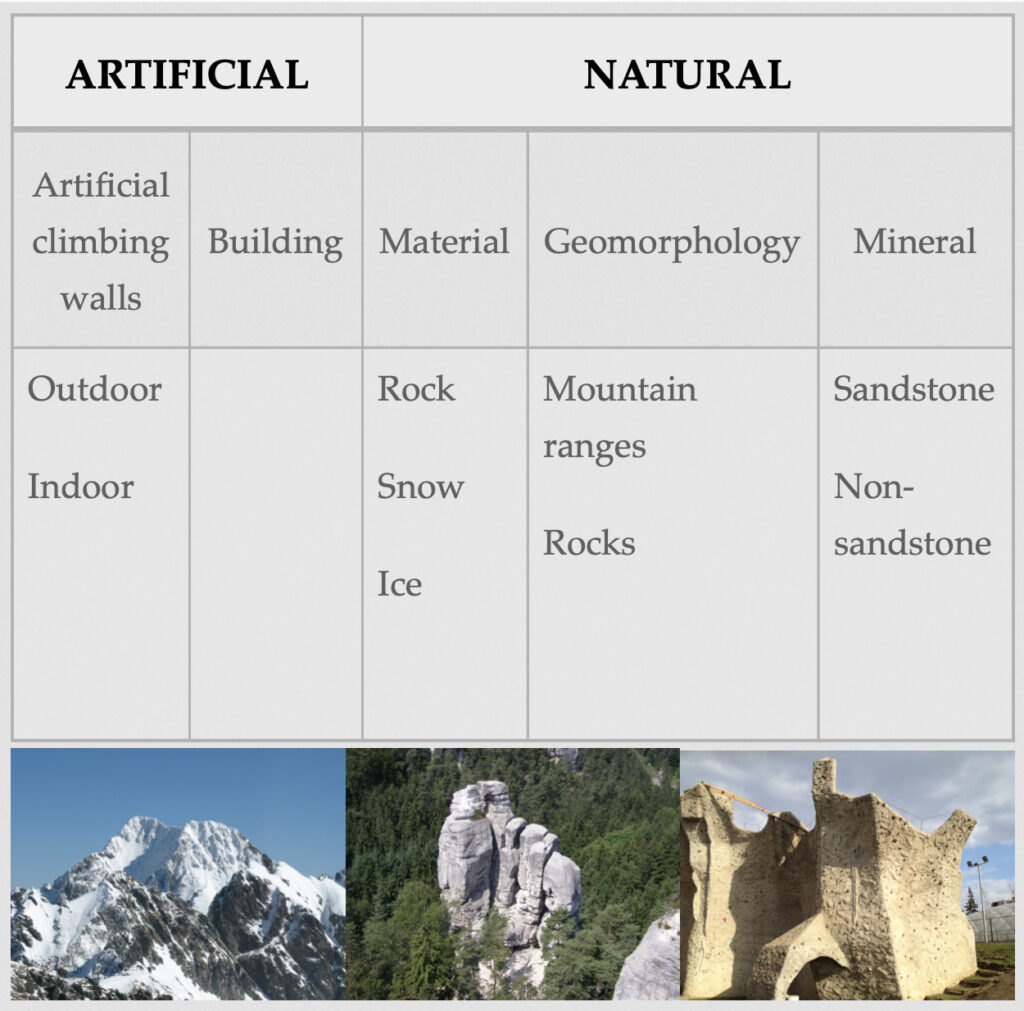We can divide mountaineering terrain into various types according to several criteria. On the one hand according to whether it is natural or artificial terrain. Artificial terrain can also be varied; here we typically include artificial climbing walls, which tend most often to be built of metal construction with wooden panels, or if they are located outdoors, out of concrete. Among artificial mountaineering terrain we also include structures which originally served a different purpose, but which for certain reasons “caught the mountaineer’s eye” and the habit developed of climbing them. Bridge pillars often fall into this category. As far as natural mountaineering terrain is concerned, its subdivision is also possible according to several criteria. On the one hand we can divide natural terrain according to the type of material, such as rock, ice, or snow. Distinction is further possible from a geomorphological perspective, such as rock terrain (the aforementioned rocky regions) and mountain ranges. Rocky regions traditionally in the Czech Republic and Germany are divided into sandstone rocks and non-sandstone rocks. Non-sandstone rocks can be divided according to the type of mineral (e.g. limestone karst, granite rock, phonolite, basalt, etc.) where each of these minerals has certain specific characteristics for climbing. Mountain ranges are divided into glaciated and non-glaciated mountains according to whether glaciers appear in them. According to height above sea level, the shape of mountain peaks, relative height about the surrounding lowlands and according to where the snow line appears in relation to the height of the mountain range, certain mountain ranges can then be identified as high altitude mountains. These are then divided into low altitude, very high altitude, and extremely high altitude mountains.

Continued in the book >>

